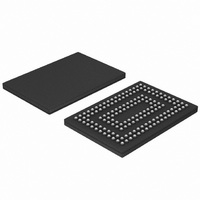SSTUM32865ET/S,518 NXP Semiconductors, SSTUM32865ET/S,518 Datasheet - Page 9

SSTUM32865ET/S,518
Manufacturer Part Number
SSTUM32865ET/S,518
Description
IC BUFFER 1.8V 28BIT 160-TFBGA
Manufacturer
NXP Semiconductors
Specifications of SSTUM32865ET/S,518
Logic Type
1:2 Registered Buffer with Parity
Supply Voltage
1.7 V ~ 2 V
Number Of Bits
28
Operating Temperature
0°C ~ 85°C
Mounting Type
Surface Mount
Package / Case
160-TFBGA
Lead Free Status / RoHS Status
Lead free / RoHS Compliant
Other names
935284905518
SSTUM32865ET/S-T
SSTUM32865ET/S-T
SSTUM32865ET/S-T
SSTUM32865ET/S-T
Available stocks
Company
Part Number
Manufacturer
Quantity
Price
Company:
Part Number:
SSTUM32865ET/S,518
Manufacturer:
NXP Semiconductors
Quantity:
10 000
NXP Semiconductors
[1]
[2]
[3]
[4]
SSTUM32865_1
Product data sheet
DCS2 and DCS3 operate identically to DCS0 and DCS1 with regard to the parity function.
PARIN arrives one clock cycle after the data to which it applies. All Dn inputs must be driven to a known state for parity to be calculated
correctly.
This condition assumes PTYERR is HIGH at the crossing of CK going HIGH and CK going LOW. If PTYERR is LOW, it stays latched
LOW for two clock cycles or until RESET is driven LOW. CSGATEEN is ‘don’t care’ for PTYERR.
PTYERR
0
is the previous state of output PTYERR.
7.2 Functional information
This 28-bit 1 : 2 registered buffer with parity is designed for 1.7 V to 2.0 V V
All clock and data inputs are compatible with the JEDEC standard for SSTL_18. The
control inputs are LVCMOS. All outputs are 1.8 V CMOS drivers that have been optimized
to drive the DDR2 DIMM load.
The SSTUM32865 operates from a differential clock (CK and CK). Data are registered at
the crossing of CK going HIGH, and CK going LOW.
The device supports low-power standby operation. When the reset input (RESET) is LOW,
the differential input receivers are disabled, and undriven (floating) data, clock and
reference voltage (VREF) inputs are allowed. In addition, when RESET is LOW all
registers are reset, and all outputs except PTYERR are forced LOW. The LVCMOS
RESET input must always be held at a valid logic HIGH or LOW level.
To ensure defined outputs from the register before a stable clock has been supplied,
RESET must be held in the LOW state during power-up.
In the DDR2 RDIMM application, RESET is specified to be completely asynchronous with
respect to CK and CK. Therefore, no timing relationship can be guaranteed between the
two. When entering reset, the register will be cleared and the data outputs will be driven
LOW quickly, relative to the time to disable the differential input receivers. However, when
coming out of reset, the register will become active quickly, relative to the time to enable
the differential input receivers. As long as the data inputs are LOW, and the clock is stable
during the time from the LOW-to-HIGH transition of RESET until the input receivers are
fully enabled, the design of the SSTUM32865 ensures that the outputs remain LOW, thus
ensuring no glitches on the output.
The device monitors DCS0, DCS1, DCS2 and DCS3 inputs and will gate the Qn outputs
from changing states when all DCSn inputs are HIGH. If DCSn input is LOW, the Qn
outputs will function normally. The RESET input has priority over the DCSn control and
will force the Qn outputs LOW and the PTYERR output HIGH. If the DCSn-control
functionality is not desired, then the CSGATEEN input can be hardwired to ground, in
which case, the set-up time requirement for DCSn would be the same as for the other Dn
data inputs.
The SSTUM32865 includes a parity checking function. The SSTUM32865 accepts a
parity bit from the memory controller at its input pin PARIN, compares it with the data
received on the Dn inputs (with either DCSn inputs active) and indicates whether a parity
error has occurred on its open-drain PTYERR pin (active LOW).
Rev. 01 — 19 September 2007
1.8 V DDR2-800 registered buffer with parity
SSTUM32865
© NXP B.V. 2007. All rights reserved.
DD
operation.
9 of 28
















